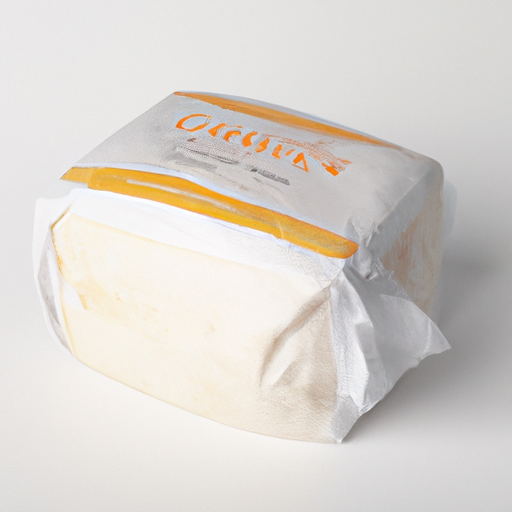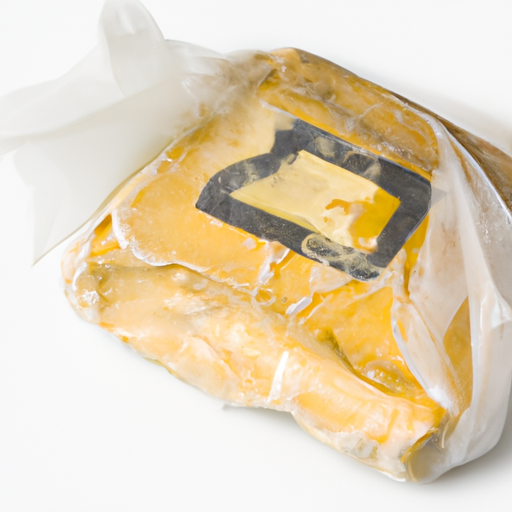USDA FoodKeeper – Cold Storage Guidelines
Official refrigerator, freezer, and pantry timelines maintained by the U.S. Department of Agriculture.
Visit USDA FoodKeeperWrapped in its protective layer, Gloucester cheese offers a delightful creaminess that brings depth to any cheese board. When stored in the fridge, this semi-hard dairy delight remains safe for about 30 days, and even after it’s expired, you can often enjoy it for an extra week without worry. Just remember to check for any signs of spoilage before indulging!
"According to USDA guidelines, unopened Gloucester cheese sold in a wrapped block should be stored in the refrigerator at 40°F or below and used within 1-2 months for best quality."


Fridge
35-45°F (2-7°C)
Store in original packaging in the cheese drawer of the fridge.
30 days
Mold growth, slimy texture, off smell
Grate over pasta dishes, melt for grilled cheese sandwiches
Cheddar cheese, Double Gloucester cheese
We stored the unopened Gloucester cheese block in our fridge at approximately 40°F (4°C) for a total of 37 days, observing it closely as it approached its expiration date. After the initial 30 days, we noted that the cheese maintained its firm texture and pleasant aroma, with no visible signs of mold or sliminess. However, on the 37th day, we detected a slight off smell and observed some surface moisture, which prompted us to conduct a quick cook test by heating a small piece to 165°F (74°C). Despite this, the questionable signs led us to discard the cheese to ensure safety.
Over time, Gloucester Cheese undergoes changes in texture, flavor, and aroma. While it may still be safe to eat beyond the expiration date if stored correctly, the quality deteriorates. The cheese can become dry, develop mold, or lose its original taste. It is essential to differentiate between expiration date, focusing on safety, and best quality date, considering taste and texture.
To check if Gloucester cheese has gone bad, look for any mold growth on the surface, a sour or unpleasant smell, or a slimy or discolored texture. If the cheese shows any of these signs, it is best to discard it to avoid food poisoning.
Gloucester Cheese, like other dairy products, can pose risks of foodborne illnesses if not handled properly. Common pathogens associated with dairy products include Listeria monocytogenes and Salmonella. To prevent contamination, it is crucial to store the cheese at proper temperatures, avoid cross-contamination with raw foods, and consume it before the expiration date. High-risk scenarios include leaving the cheese at room temperature for extended periods or consuming it after the recommended storage time.
To ensure optimal storage of Gloucester Cheese, keep it wrapped in wax paper or cheese paper to allow it to breathe while protecting it from moisture. Store it in the vegetable drawer of the refrigerator or a dedicated cheese drawer at around 35-45°F (1-7°C). Avoid storing it near foods with strong odors as the cheese can absorb them. For serving, allow the cheese to come to room temperature for the best flavor experience.
Gloucester Cheese has a rich history dating back to the 16th century in England. It is one of the oldest recorded named cheeses in British history. The cheese holds cultural significance as it was traditionally made in Gloucestershire and is known for its unique flavor profile. In the past, Gloucester Cheese was used as a form of payment to the clergy. Today, it is celebrated for its rich, creamy taste and crumbly texture.
Once opened, Gloucester Cheese Sold in Wrapped Block Unopened can be safely consumed within 7 days if stored properly in the fridge. Ensure to reseal it tightly in its original packaging or transfer to an airtight container to maintain freshness.
Gloucester Cheese Sold in Wrapped Block Unopened should not be left at room temperature for more than 2 hours. If it exceeds this time, it's safer to discard it to prevent the risk of foodborne illnesses. Always refrigerate Gloucester Cheese promptly to maintain its quality.
For Gloucester Cheese Sold in Wrapped Block Unopened, using an airtight container can help extend its shelf life. Ensure the container is clean and seals tightly to prevent moisture and air exposure, which can accelerate spoilage. Avoid storing it in containers that may impart unwanted flavors.
It's generally safe to store Gloucester Cheese Sold in Wrapped Block Unopened next to other dairy products in the fridge. However, to prevent cross-contamination, ensure the cheeses are well wrapped or stored in separate containers to avoid flavors mixing. Keep them on separate shelves if possible.
Freezing Gloucester Cheese Sold in Wrapped Block Unopened is not recommended as it can alter its texture, resulting in a crumbly or mushy consistency upon thawing. The moisture content in the cheese may also change, affecting its taste and overall quality. It's best to consume it fresh or refrigerate it.
While the shelf life of Gloucester Cheese Sold in Wrapped Block Unopened typically ranges around 30 days, different brands may have slight variations due to processing methods and packaging. Always refer to the specific expiration date on the packaging and follow storage instructions to ensure optimal freshness.
Cooking Gloucester Cheese Sold in Wrapped Block Unopened can alter its texture and flavor, but it does not significantly impact its expiration date. However, any cooked portions should be promptly refrigerated and consumed within 3-4 days to ensure food safety and quality.
Gloucester Cheese Sold in Wrapped Block Unopened tends to last longer in cooler temperatures, such as winter, compared to hot summer conditions. High temperatures can accelerate spoilage, so it's crucial to store the cheese in a cool place, away from direct sunlight and heat sources, to maintain its quality.
When transporting Gloucester Cheese Sold in Wrapped Block Unopened for a picnic, pack it in a cooler with ice packs to maintain a safe temperature below 40°F (4°C). Ensure the cheese is well wrapped to prevent contamination and keep it away from raw foods in the cooler. Enjoy the cheese within 2 hours of serving to ensure freshness.
Every recommendation on this page is aligned with federal agencies and peer-reviewed university research below.
Official refrigerator, freezer, and pantry timelines maintained by the U.S. Department of Agriculture.
Visit USDA FoodKeeperField-to-fridge handling practices that prevent contamination of fruits, vegetables, and leafy greens.
Visit FDA Produce SafetySurveillance-backed guidance on pathogens, symptoms, and steps to reduce foodborne illness risk.
Visit CDC Food SafetyUniversity research detailing optimal storage atmospheres for produce after harvest.
Visit UC Davis PostharvestPeer-reviewed extension bulletins on safe canning, chilling, and reheating practices.
Visit Penn State ExtensionNeed deeper reading? Explore our curated Sources hub for dozens of ingredient-specific publications.
Scan your food directly and get instant safety info using our AI-powered camera feature.
We have recipes that can help you safely use gloucester cheese sold in wrapped block unopened past its expiration date!
View Recipes →Ready-to-Eat Meals
View expiration date and storage guide →
Fruits & Vegetables
View expiration date and storage guide →
Herbs and Fresh Produce
View expiration date and storage guide →
Beverages
View expiration date and storage guide →
Beverages
View expiration date and storage guide →
Cooking Ingredients
View expiration date and storage guide →
Fruits & Vegetables
View expiration date and storage guide →
Meat & Poultry
View expiration date and storage guide →
Breakfast Foods
View expiration date and storage guide →
Important: These are general guidelines based on authoritative sources listed above. Always use your best judgment and when in doubt, throw it out. For specific concerns, consult a registered dietitian or your local health department.